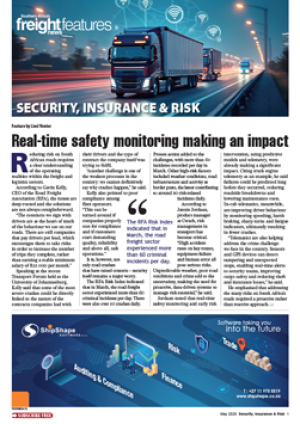Over 70% of respondents to
the FTW Trade Finance
survey identified a lack of
financing capacity as one
of the biggest obstacles to obtaining
trade finance within the Southern
African Development Community
(SADC).
Political and social instability
in certain SADC countries also
exacerbates the problem as this
affects a country’s credit rating,
said Khalid Varela Samamad,
process and projects manager at J&J
Mozambique.
Nkosinathi Nkonde, customs
specialist at the Altron group, noted
that promotion of good governance
and regulations from governments
could considerably lift the constraints
on institutions’ financing capacity.
“Government needs to actually
deliver on their promises to make
it easier to do business into SADC.
There is very little assistance
offered to smaller businesses in
this regard and unless you do the
legwork yourself and cut government
out completely, you just don’t get
anywhere,” said one export manager
who commented anonymously.
A senior member of a global
import/export company said
that the global bodies such as the
International Monetary Fund (IMF)
and the World Bank needed to be
more stringent with countries that
had a reputation for government
meddling and fraud and corruption.
“This will pave the way, eventually,
for easier access to trade finance,” he
said.
Trade finance consultant, Michael
Schweitzer, pointed out that his
company often relocated risks to
other countries to mitigate risk.
INSERT 1
Banks vs institutions
There is a definite trend
emerging where traders
are moving away from banks
to other financial
institutions for
their trade
financing.
Reasons
include the fact
that financial
institutions
offer better
advice and are
more competitive
and that banks will invariably
look at companies’ balance
sheets when lending which
is problematic for SMME
operations.
“Banks have become
too costly with their
handling fees
which provided
the gap for
other trade
houses to
offer f lexible
services that
are easier to work
around,” said Nirri
Maharaj, director at Marine
Container Forwarding.

